Mykola Ponomarenko
Learning-based Noise Component Map Estimation for Image Denoising
Sep 24, 2021

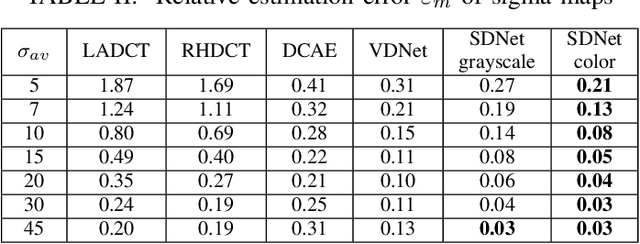
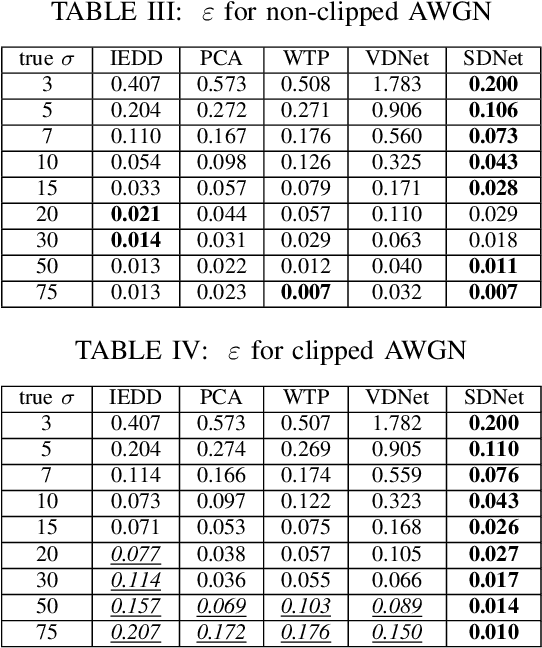
Abstract:A problem of image denoising when images are corrupted by a non-stationary noise is considered in this paper. Since in practice no a priori information on noise is available, noise statistics should be pre-estimated for image denoising. In this paper, deep convolutional neural network (CNN) based method for estimation of a map of local, patch-wise, standard deviations of noise (so-called sigma-map) is proposed. It achieves the state-of-the-art performance in accuracy of estimation of sigma-map for the case of non-stationary noise, as well as estimation of noise variance for the case of additive white Gaussian noise. Extensive experiments on image denoising using estimated sigma-maps demonstrate that our method outperforms recent CNN-based blind image denoising methods by up to 6 dB in PSNR, as well as other state-of-the-art methods based on sigma-map estimation by up to 0.5 dB, providing same time better usage flexibility. Comparison with the ideal case, when denoising is applied using ground-truth sigma-map, shows that a difference of corresponding PSNR values for most of noise levels is within 0.1-0.2 dB and does not exceeds 0.6 dB.
Blind estimation of white Gaussian noise variance in highly textured images
Nov 29, 2017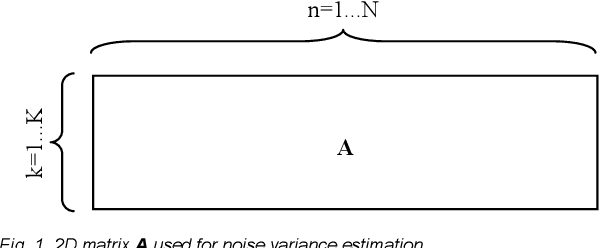


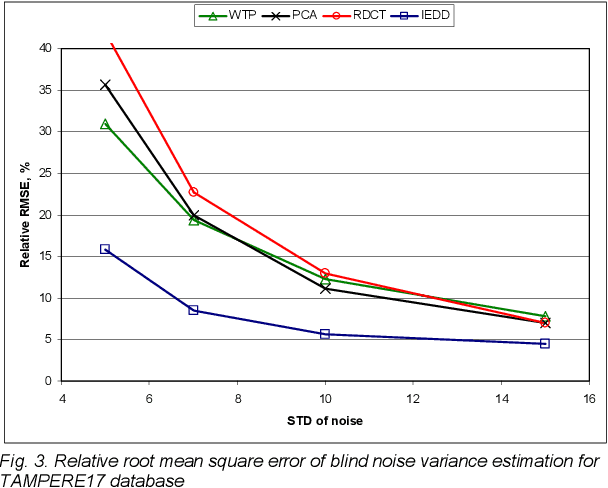
Abstract:In the paper, a new method of blind estimation of noise variance in a single highly textured image is proposed. An input image is divided into 8x8 blocks and discrete cosine transform (DCT) is performed for each block. A part of 64 DCT coefficients with lowest energy calculated through all blocks is selected for further analysis. For the DCT coefficients, a robust estimate of noise variance is calculated. Corresponding to the obtained estimate, a part of blocks having very large values of local variance calculated only for the selected DCT coefficients are excluded from the further analysis. These two steps (estimation of noise variance and exclusion of blocks) are iteratively repeated three times. For the verification of the proposed method, a new noise-free test image database TAMPERE17 consisting of many highly textured images is designed. It is shown for this database and different values of noise variance from the set {25, 49, 100, 225}, that the proposed method provides approximately two times lower estimation root mean square error than other methods.
Statistical evaluation of visual quality metrics for image denoising
Nov 02, 2017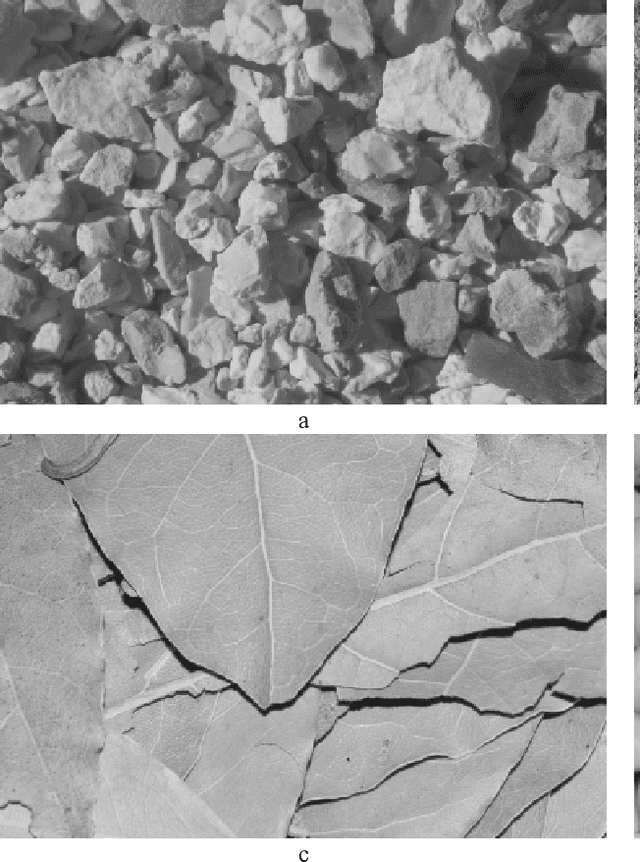
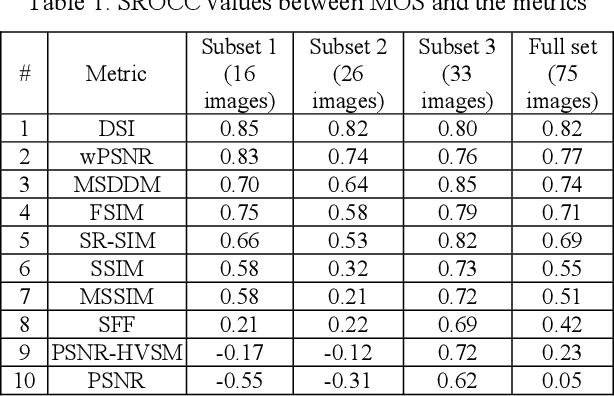


Abstract:This paper studies the problem of full reference visual quality assessment of denoised images with a special emphasis on images with low contrast and noise-like texture. Denoising of such images together with noise removal often results in image details loss or smoothing. A new test image database, FLT, containing 75 noise-free "reference" images and 300 filtered ("distorted") images is developed. Each reference image, corrupted by an additive white Gaussian noise, is denoised by the BM3D filter with four different values of threshold parameter (four levels of noise suppression). After carrying out a perceptual quality assessment of distorted images, the mean opinion scores (MOS) are obtained and compared with the values of known full reference quality metrics. As a result, the Spearman Rank Order Correlation Coefficient (SROCC) between PSNR values and MOS has a value close to zero, and SROCC between values of known full-reference image visual quality metrics and MOS does not exceed 0.82 (which is reached by a new visual quality metric proposed in this paper). The FLT dataset is more complex than earlier datasets used for assessment of visual quality for image denoising. Thus, it can be effectively used to design new image visual quality metrics for image denoising.
Complex-valued image denosing based on group-wise complex-domain sparsity
Nov 01, 2017
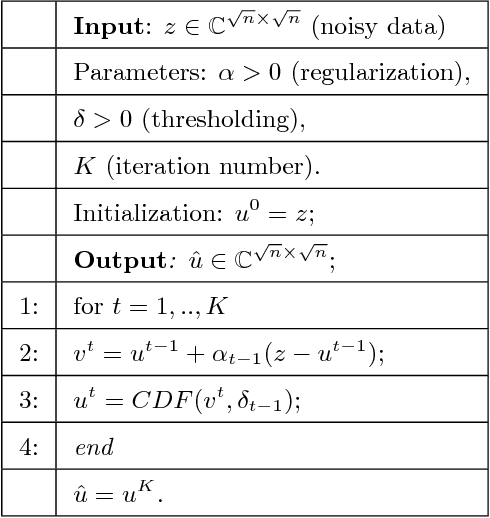


Abstract:Phase imaging and wavefront reconstruction from noisy observations of complex exponent is a topic of this paper. It is a highly non-linear problem because the exponent is a 2{\pi}-periodic function of phase. The reconstruction of phase and amplitude is difficult. Even with an additive Gaussian noise in observations distributions of noisy components in phase and amplitude are signal dependent and non-Gaussian. Additional difficulties follow from a prior unknown correlation of phase and amplitude in real life scenarios. In this paper, we propose a new class of non-iterative and iterative complex domain filters based on group-wise sparsity in complex domain. This sparsity is based on the techniques implemented in Block-Matching 3D filtering (BM3D) and 3D/4D High-Order Singular Decomposition (HOSVD) exploited for spectrum design, analysis and filtering. The introduced algorithms are a generalization of the ideas used in the CD-BM3D algorithms presented in our previous publications. The algorithms are implemented as a MATLAB Toolbox. The efficiency of the algorithms is demonstrated by simulation tests.
 Add to Chrome
Add to Chrome Add to Firefox
Add to Firefox Add to Edge
Add to Edge